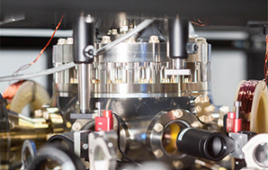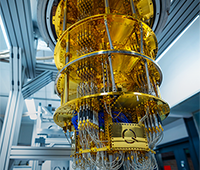 PITTSBURGH — ANSYS and Cray, working in conjunction with two supercomputing centers, have smashed the previous simulation world record by scaling ANSYS Fluent to 129,000 compute cores — enabling organizations to spur innovation by creating complete virtual prototypes of their products. ANSYS achieved these breakthroughs by working with the National Center for Supercomputing Applications (NCSA) and the National Energy Research Scientific Computing Center (NERSC).
PITTSBURGH — ANSYS and Cray, working in conjunction with two supercomputing centers, have smashed the previous simulation world record by scaling ANSYS Fluent to 129,000 compute cores — enabling organizations to spur innovation by creating complete virtual prototypes of their products. ANSYS achieved these breakthroughs by working with the National Center for Supercomputing Applications (NCSA) and the National Energy Research Scientific Computing Center (NERSC).
Less than a year ago, ANSYS announced Fluent had scaled to 36,000 cores with the help of NCSA. While the nearly 4x increase over the previous record is significant, it tells only part of the story. ANSYS has broadened the scope of simulations allowing for applicability to a much broader set of real-world problems and products than any other company offers.
The calculations were run on a Cray XC30 supercomputer running at 90 percent efficiency — which is unprecedented in its scale and efficiency for parallel processing. For example, few software packages achieve greater than 75 percent efficiency approaching this scale.
“This 4x increase over the previous record for compute core count includes a complex simulation involving multiple complicated physics, in this case an industrial combustor,” said Wim Slagter, ANSYS HPC product manager. “We test our software on real-life applications by partnering with the global leaders in supercomputing. That’s the only way we can ensure that the advancements made in the lab are actually usable by our industrial customers.”
This new record is critical as products — from mobile phones to driverless automobiles to aerial drones — become smarter and customers demand faster and more frequent product introductions without compromising the ultimate quality and reliability of product designs. By leveraging extreme computing power, organizations can rapidly iterate designs to reinvent whole product categories and to create the next “must-have” product. And while most organizations don’t have access to core counts of this size, even users at lower levels of compute power are now less constrained by hardware limitations because bigger models can be sped up at existing capacity.
The growth in computing power over the last decade has been remarkable, given that in 2005 the most sophisticated simulations were being performed on a maximum of 512 cores. During this period, ANSYS has engineered its products to nearly double their scalability annually, and has consistently met the industry’s challenge and customer’s expectations for creating breakthrough products.
“Less than a year ago, our partners ANSYS and NCSA made a breakthrough with a 36,000-core fluid dynamics simulation,” said Steve Scott, senior vice president and chief technology officer at Cray. “Only a few months later, the team has eclipsed that record. This example of extreme scalability for high-fidelity simulations is needed to keep up with the accelerated pace of innovation in the marketplace.”



